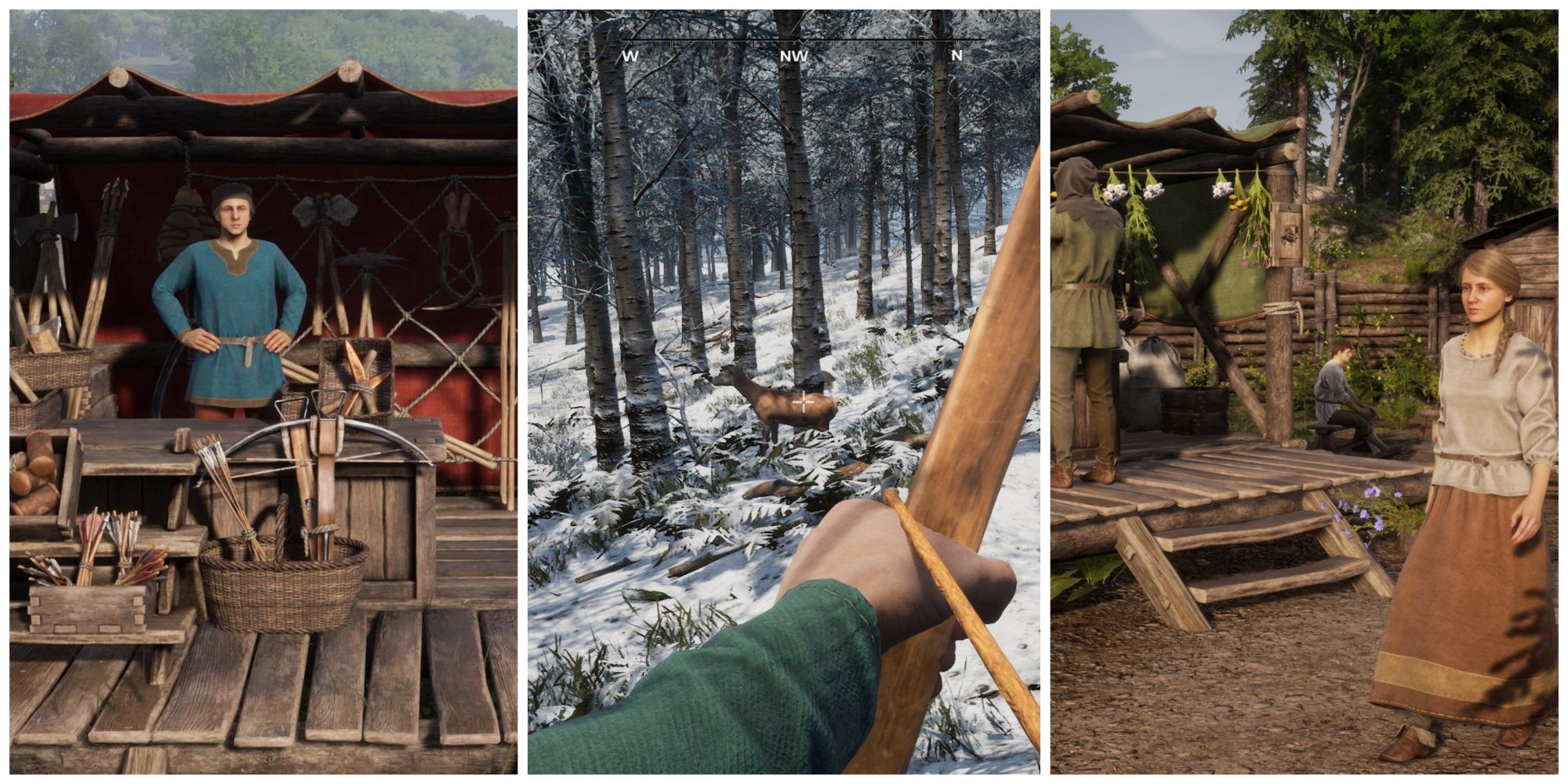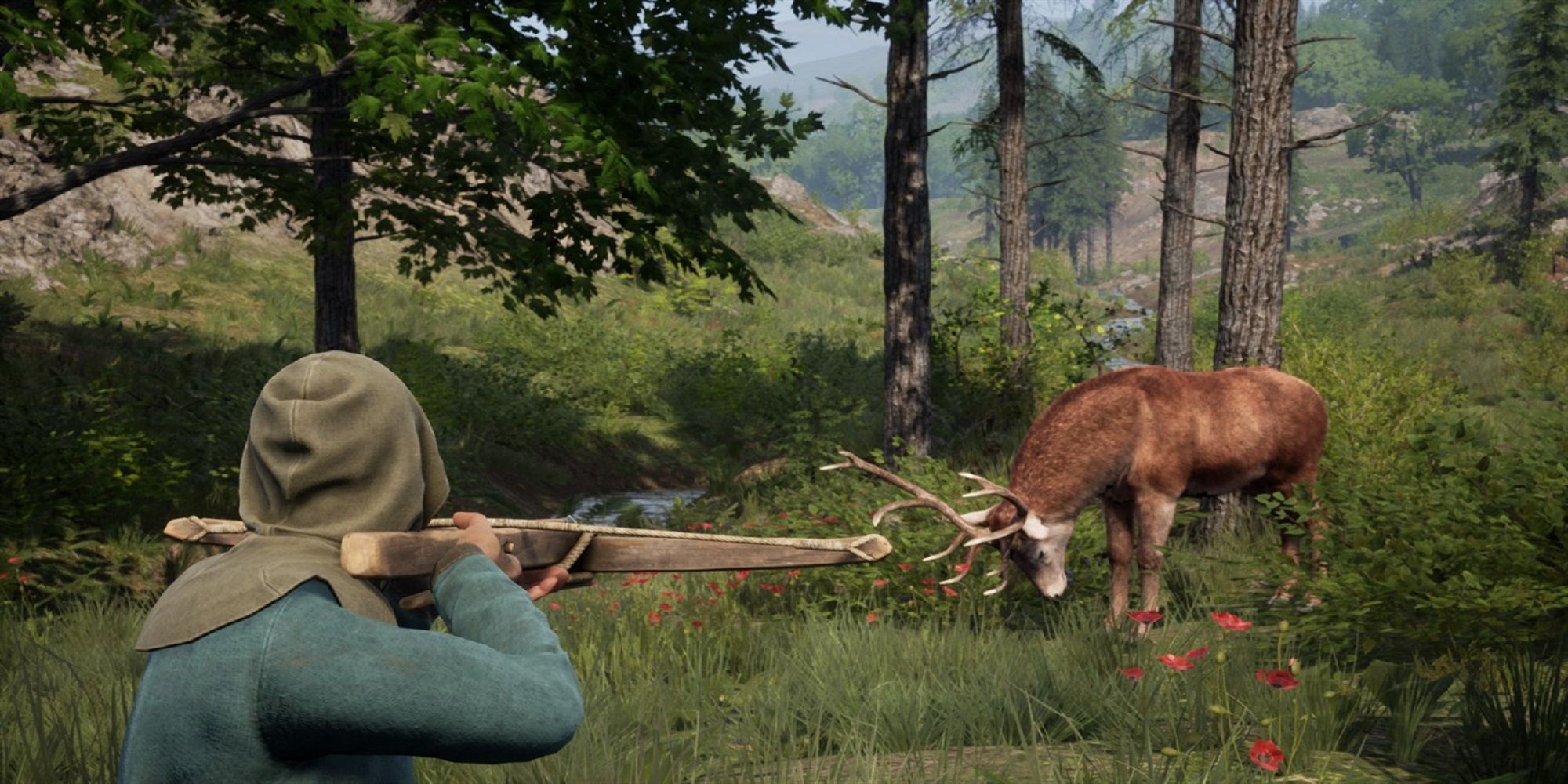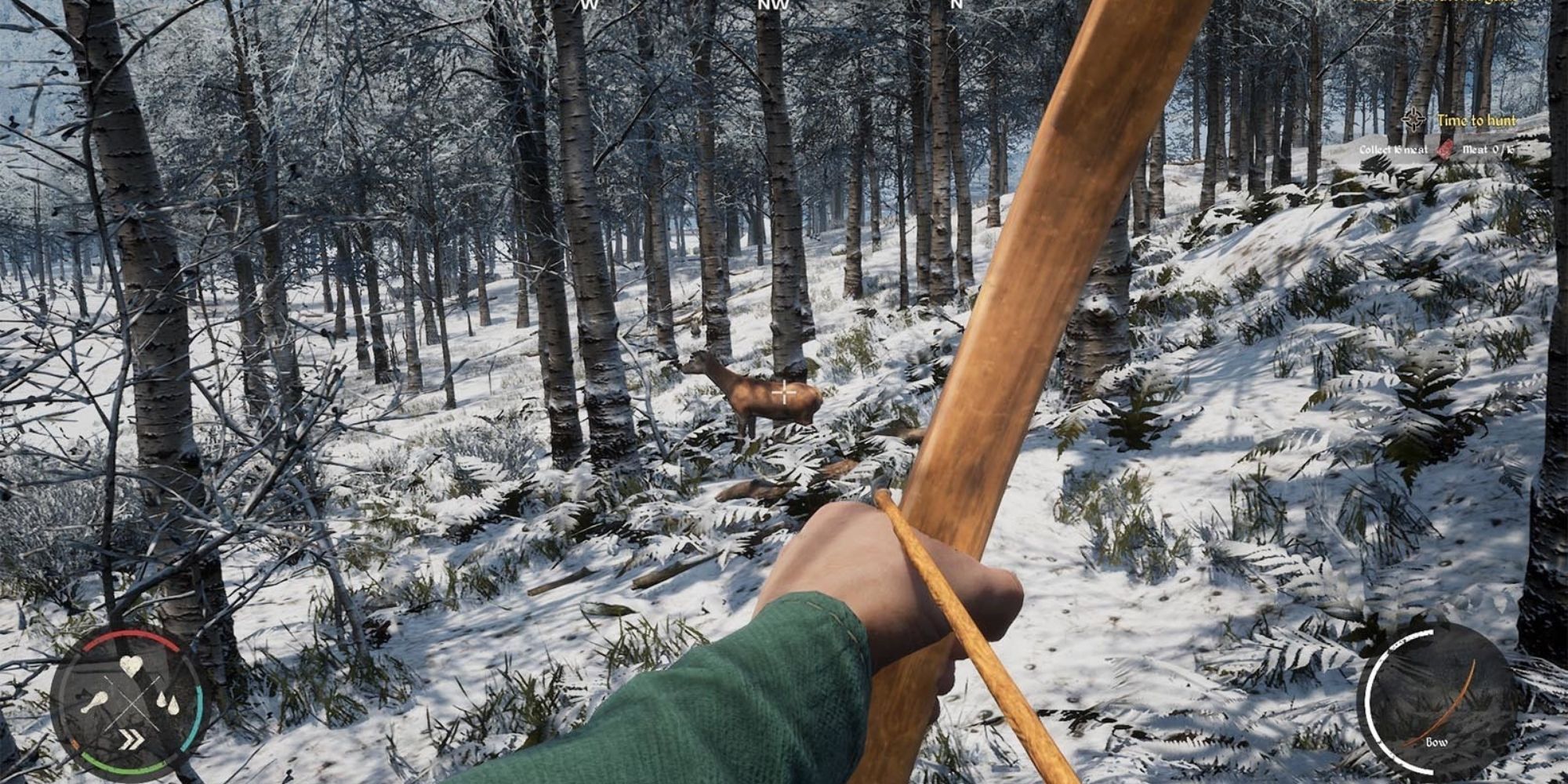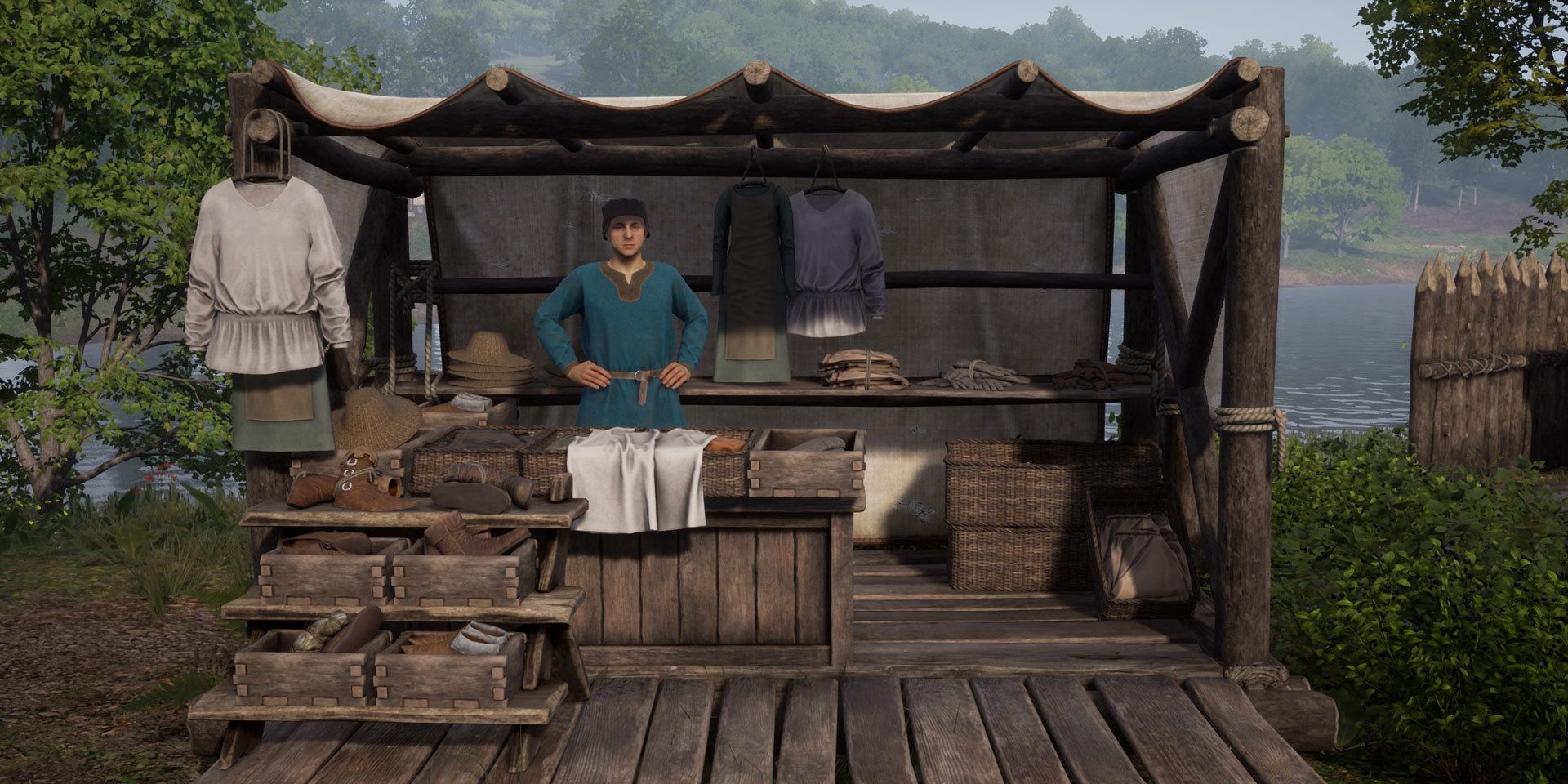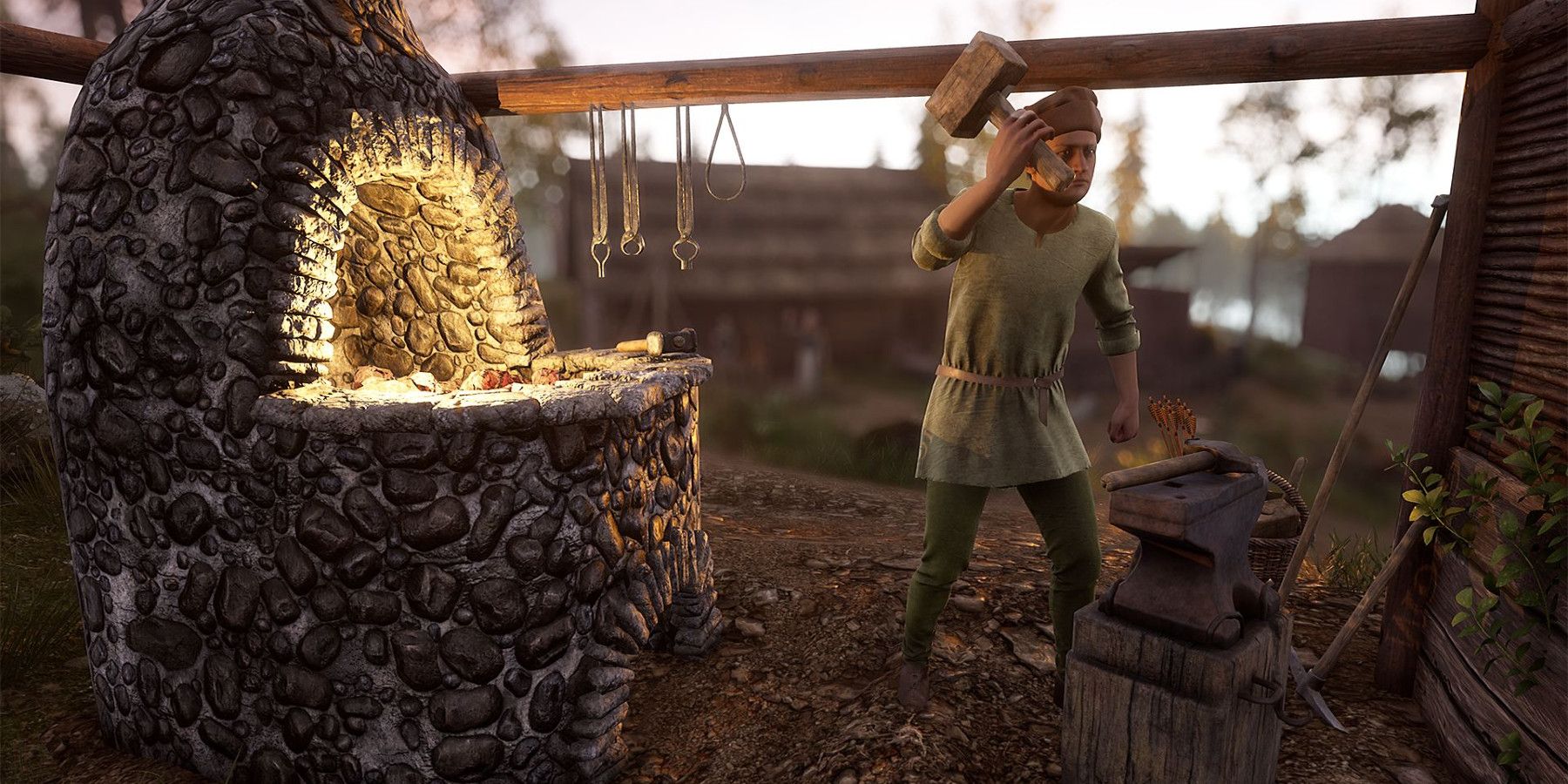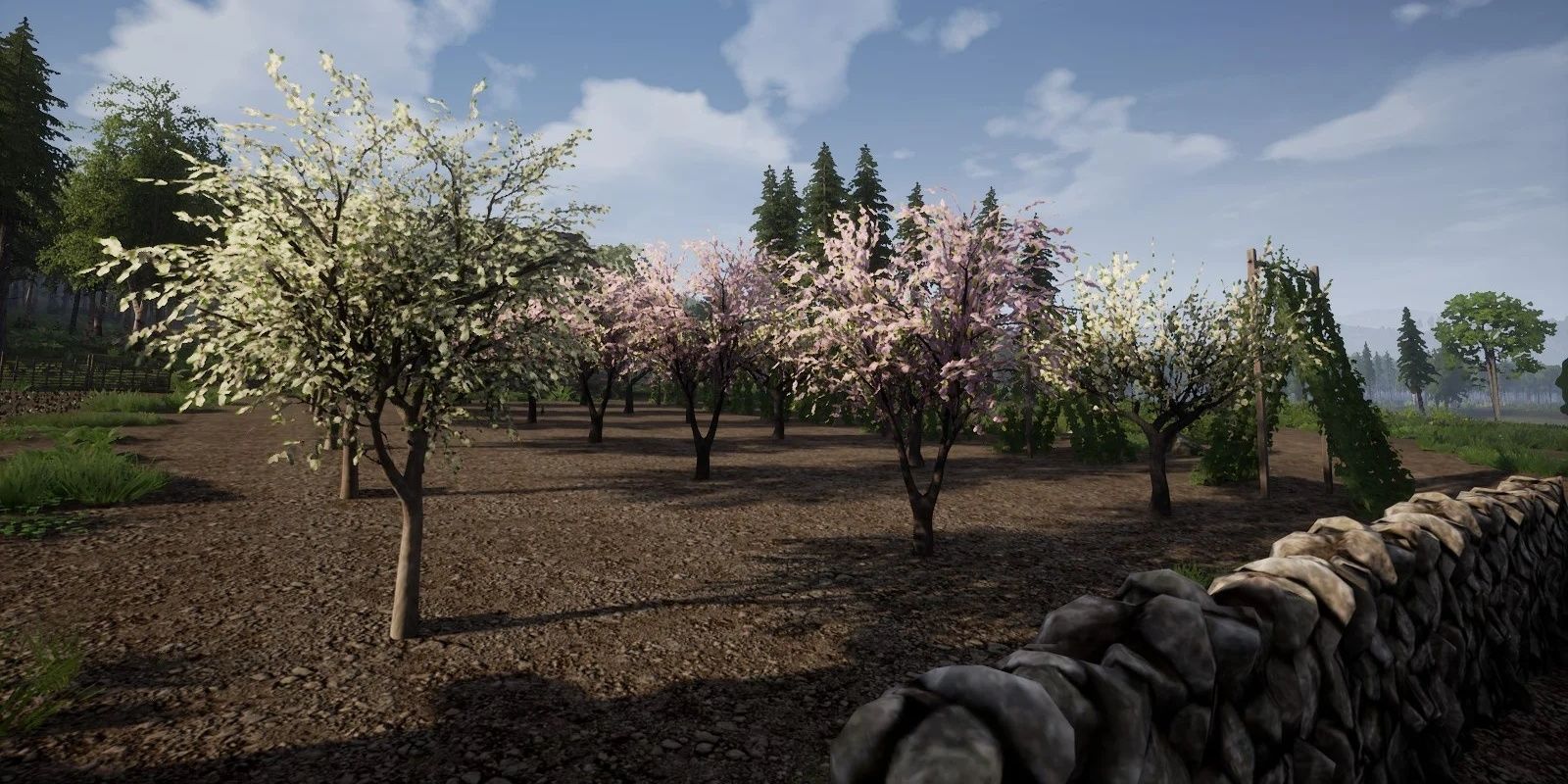Highlights
- Leverage villagers and resources to craft and sell valuable goods for fast cash in Medieval Dynasty, maximizing profit margins.
- Early-game leather bags and mid-game clothing offer high returns; late-game focus shifts to food and drink for top village sales.
- Crafting tools, horse items, and metal projectile ammunition provides steady income streams throughout different stages of the game.
As in any time period, the key to prosperity is not to work hard but to work smart. This sage advice applies to the economy of Medieval Dynasty, meaning that anyone looking to rack up a king's ransom in gold will need to know what the good people of The Valley and Oxbow want and how much cash they're willing to part with to get it.
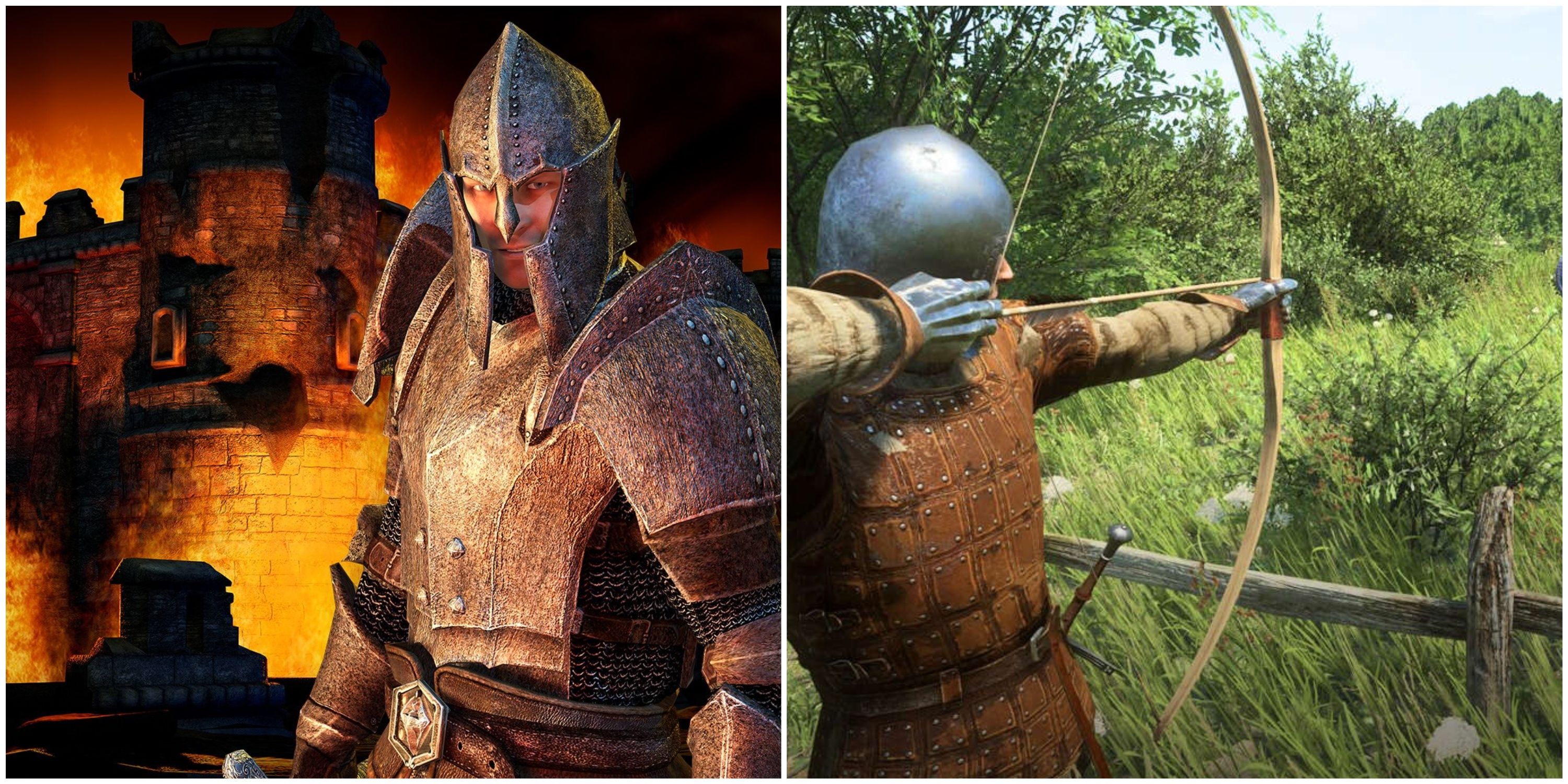
5 Best Medieval Sandbox Games
Medieval sandboxes make for some of gaming's best experiences, letting players forge their own epic legends.
Thankfully, various moneymaking strategies are available for ambitious peons looking to climb the rickety social ladder, no matter the height of their skill trees, the width of their property, or the size of the hole in their pocket. Whether it's a starting push to get the village going or a serious investment to solidify the dynasty for generations, these goods should be the first to sell for cash on the road to riches.
Updated May 20, 2024 by Mark Smith: Medieval economies may not have changed much year by year, but as a game that receives regular updates and balance patches to the game economy, Medieval Dynasty sure does. Here's the latest info on which raw materials should be turned into bundles for sale that are sure to fetch a nice price at the village market so players can spend less time toiling and more time enjoying the fruits of their labor.
Early-Game: Leather Bags & Backpacks (Leather, Linen Fabric)
An Easy Material To Flip, Even From The Get-Go
- Simple bags, used to sow seeds and spread fertilizer, can be sold at almost four times the base material price required to craft them
- Large pouches and simple large backpacks, unlocked with a third-tier sewing hut, sell for around five times the material cost
After assigning villagers to the hunting lodge, players should have a dependable source of leather to work with. After building a sewing hut, assigning a team of seamsters, stocking up on flax (to refine into linen fabric), and finally unlocking and purchasing the schematic, players can get to work turning two parts of leather and one linen fabric into bags, which are used for sowing crop seeds and fertilizer. Bags can sell for a minimum of over four times the price of the raw materials. Bags are lightweight items and easy to haul to the market.
Later down the line, after unlocking the third tier for the sewing hut, players might want to consider getting into the backpack business. The simple large backpacks sell particularly well, even when the raw materials are bought from a vendor. The large backpack only needs sticks, fur, and linen thread on top of the leather and linen fabric required for the aforementioned bag. Players should be building up these materials naturally as long as they keep their eyes open for sticks on the ground and have villagers hunting game.
Early/Mid-Game: Metal Projectile Ammunition (Iron, Bronze, Sticks)
Using Bronze & Iron To Hit Financial Targets Fast
- Lightweight and profitable, bronze and iron projectiles are easily crafted so long as the player has built a hunting lodge
- Arrows and bolts deliver the most profit per production cost, and applying poison almost doubles the selling price
While they can otherwise be used in hunting to bring in a steady supply of animal products and leather, arrows and bolts are themselves fine items to sell for quick and easy cash, although the hunting lodge will need to be set up in the player's village before these items can be crafted. Assuming a mine is nearby, and a smithy has been unlocked and built, iron and bronze ammunition are a great way to supercharge any moneymaking campaign during the mid-game.

The 7 Most Infamously Annoying Collectibles In Video Games
Video games are no stranger to annoying collectible hunts. These are some of the most infamous examples.
Copper ammunition also sells well, yielding only slightly less than the best-selling iron-and-bronze-tipped variants. If players have the herbalist's Hut unlocked and set up, the requisite potion recipe, and a steady supply of nightshade and water, they can sell poisoned arrows and poisoned bolts, which go for almost double the selling price. Best of all, applying poison does not add to arrows' low-weight cost, making them ideal for market transportation.
Mid-Game: Clothing (Linen, Wool, Fur, Leather)
Everyone Needs A Shirt On Their Back, And, Ideally, Pants
- Players who would rather not gather leather and linen by hand can buy materials for clothes and craft them for a fair turnaround
- While more skill and resource costly, upper-class ware like the joined hose and noble shoes and boots sell for a pretty penny
A spare supply of leather and fur can be turned into shoewear and sold to the village fashionistas. Noble boots, noble shoes, and fancy shoes should be crafted with materials gathered from the wild, as buying the leather does not tend to work out well in the long run. However, with a team of competent hunters, this should not be an issue. Lower body clothes, including trousers with cuffs, hose, and joined hose (joined hose especially), can be made using vendor-sold materials and still sold for a tidy profit.
Given how important it is for peasants to protect their heads from the elements, it should be no surprise that hats also sell well in the market. Hats and hoods of any description, while the upfront cost of their schema and production tech points can be high, are profitable long-term goods to put up for sale. Tailoring roleplay enthusiasts with a spare pile of copper ingots may be interested to learn that simple tunics and quilted vests are also viable sale goods.
Mid-Game: Tools (Iron, Bronze, Sticks And Logs)
Flipping Ingots Into Easy Gold
- Iron and bronze tools should be made and sold once a mine is established and a smithy built
- The other main component of tools are sticks, which are easy enough to find for those who make a habit of picking them up from the ground on their travels
Once the player has transformed a cave into a working mine and set up a smithy, producing tools is an excellent option for generating income. Iron tools are good to sell all around, but bronze tools are even better. Axes, sickles, scythes, scissors, and spears sell particularly well compared to the base material cost (bought or found). Spears of any quality above wood are prized on the market. However, scythes, bronze spears, and axes are heavier to move around than scissors and sickles. All tools require sticks and logs in their crafting recipes.
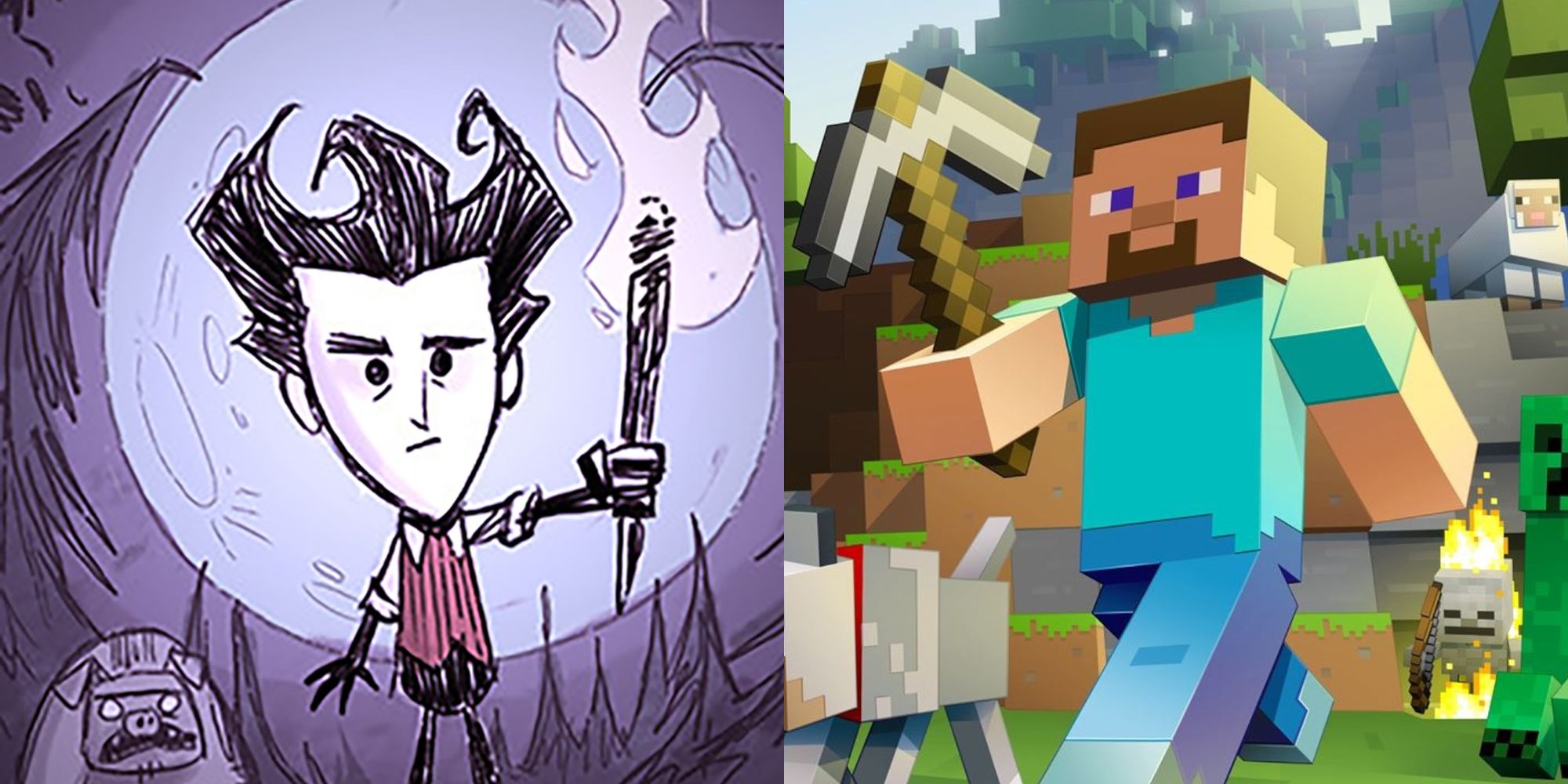
14 Open-World Games With The Best Crafting, Ranked
Games that feature crafting in an open-world setting have all manner of variety, but which of them has the best crafting mechanics?
These should be plentiful if the player has been diligently collecting them during their travels and lumberjack villagers have also been set to gather them from the woodshed. One way to ensure a steady supply is available is to ensure villagers have plenty of firewood to keep them going. Firewood can be extracted from logs, and lumberjacks can be assigned to produce regular amounts of firewood for the village. Otherwise, villagers will start using sticks and logs from storage to heat themselves.
Mid-Game: Horse Items (Linen, Leather, Tin)
More Than Just Lucky Charms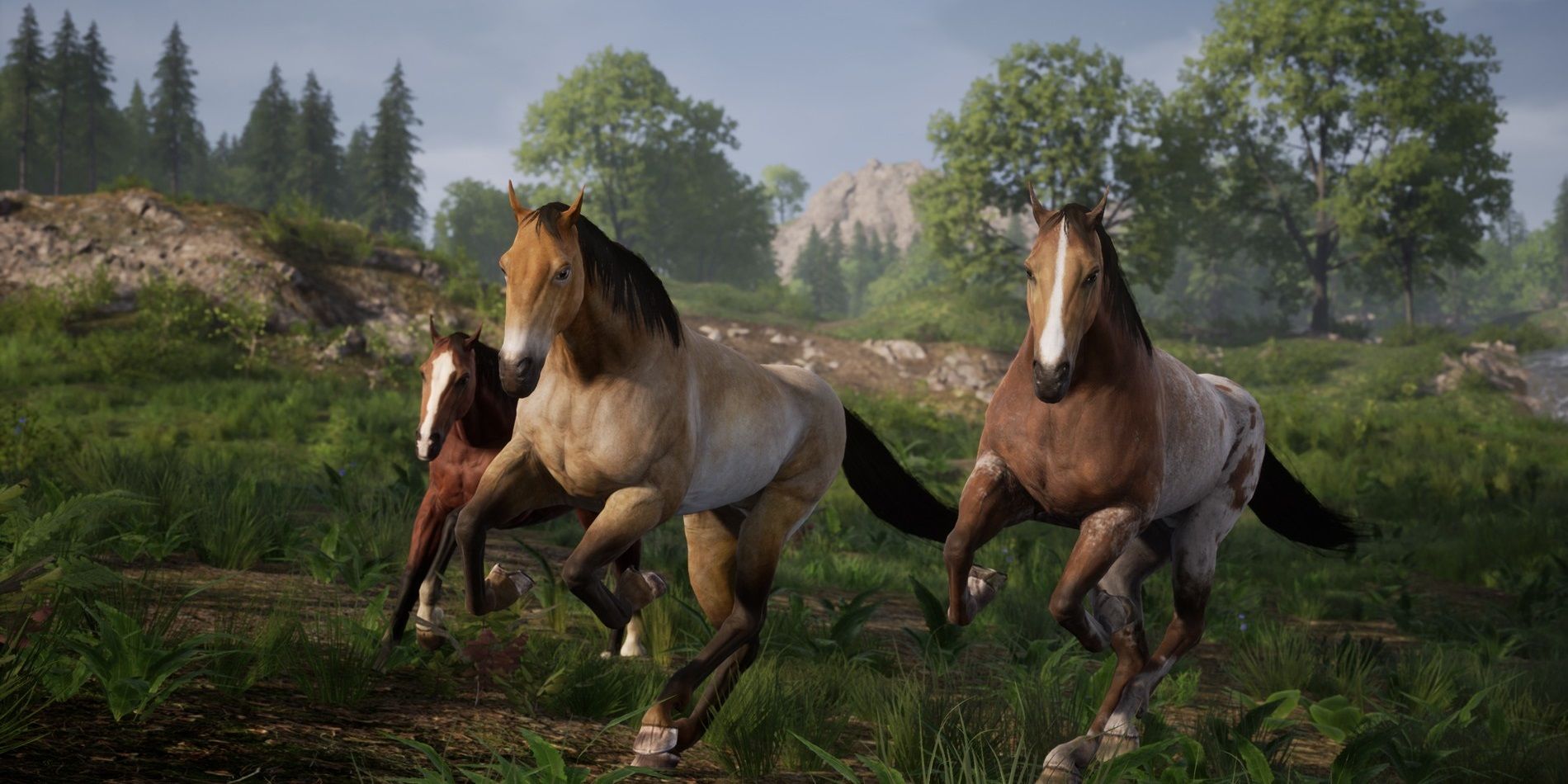
- Tin can be valuable when used to craft saddlebags and large saddlebags
- Crafting horseshoes can be a reliable way to make a living, but because of their weight, they cannot be produced and sold in high numbers
Tapped one of the many mines in the Valley or Oxbow only to find tin ore instead of iron or bronze? Tin can be a valuable resource after unlocking at least the tier-two sewing hut, as it is an ingredient for the saddlebag. At tier three, the sewing hut can produce large saddlebags, which go for slightly more but cost three times the tin. Speaking of horses, villages who use those bags to haul goods around will presumably need to keep their steed's feet in good condition.
For this reason, crafting horseshoes with iron ingots is a steady way to earn some income. Buying iron from vendors and crafting horseshoes for later sale is a good way to fill the village coffers. The only downside is the weight, which can limit how much is hauled into town and traded for coin, but this should be less of a problem for those who set up their dynasties close to an established town.
Late-Game: Food & Drink (Fruit Juice, Fish, Meat)
The Goods That Sell Like Sweet Summer Wine
- Pies and tarts are hot sellers, meat pie and fish tarts in particular
- Villagers love wine, and the cherry and plum varieties are the most lucrative in the marketplace
Food is one of those items that will never go out of style, and even the villagers in Medieval Dynasty need to eat (in a simulated fashion). Players in the late game with a working kitchen and access to an orchid will want to focus on producing pies. The poppy seedpie and cherry pies seem to sell the best, but the real money makers are the meat pie and the fish tart. After such a feast, deep-pocketed villagers will be looking to wash all that food down with a good drink.
After accruing the resources to build a tavern, a juice press, apple, plum, cherry, or pear seedlings (which can be bought or found in riverside barrels), workers to plant and maintain orchards, and enough clay to transport the product, players can make and sell wine beverages. Cherry wine and plum wine are currently the top sellers. Another beverage that sells extremely well is the Potion of Possibilities, but this consumable is crafted using a second-tier herbalist hut. One of the ingredients needed for this skill point-resetting beverage (useful for peasants who made mistakes early in life) is mead, which does require a tavern to make.
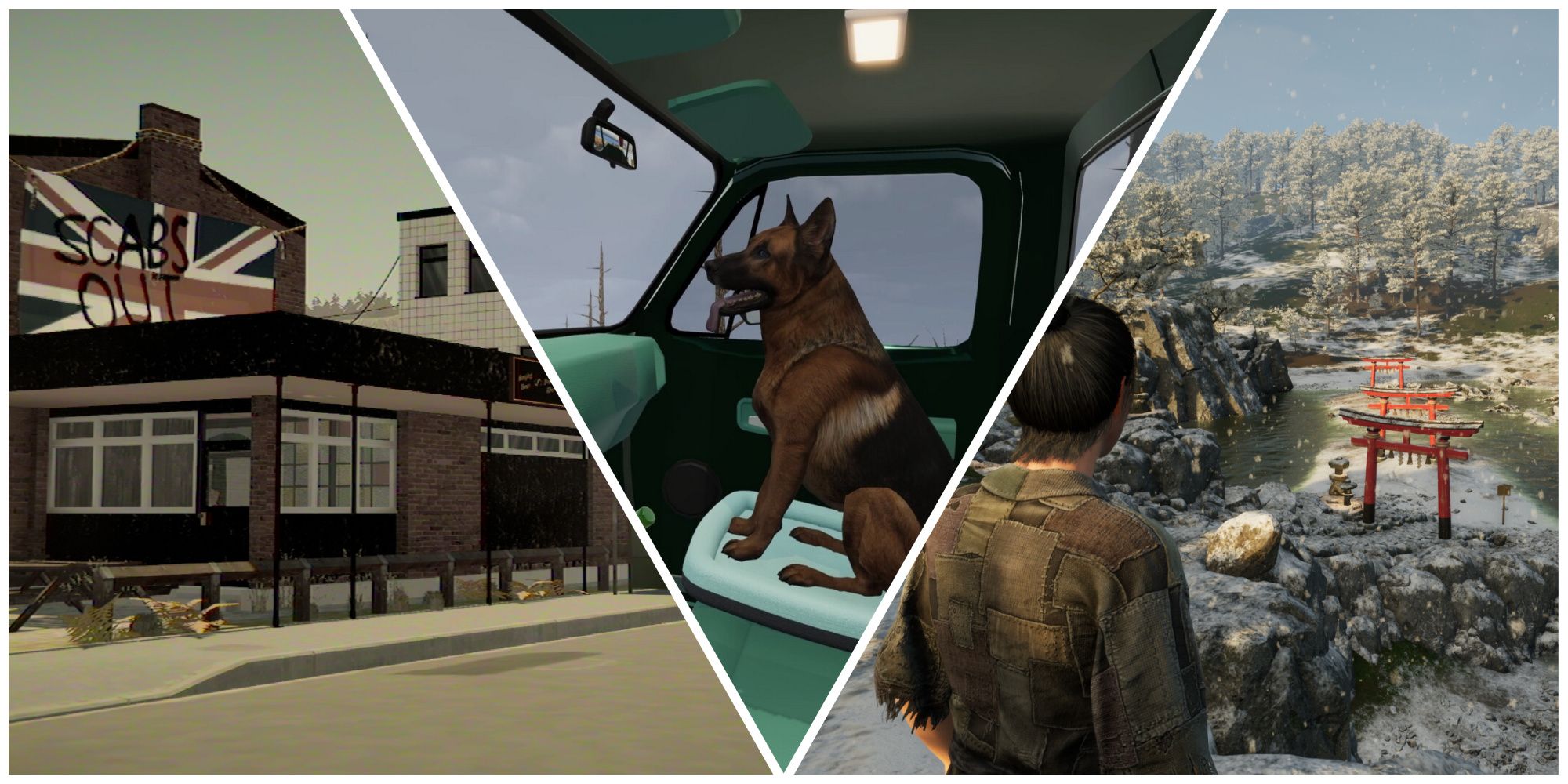
5 Best First Person Open World Life Simulators
Gamers yearn to experience other lives, and while few offer both realistic first-person perspectives and wide-open worlds, these life sims do it all.

